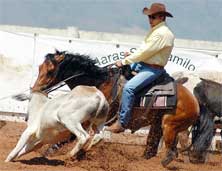
Hype alert – Web 2.0 Marketing is a paradigm shift but only a portion of the market is using it today. In Part 1 I argued that market trends should be pushing you to use social networking, blogs, wikis, and the other tools of Web 2.0 in your marketing mix. Given the uneven adoption of these tools in your customer base you will be managing a mix of the old and new for quite some time. So think of it as expanding your paradigm.
Before we go on I want to add to what I said in Part 1. There is one additional reason for doing all this that is specific to the education market. Most teachers are isolated in their classrooms – they yearn to have their voice heard and to be part of a larger community. The asynchronous nature of most social media are ideal for meeting this need. It is one of the reasons there are so many education groups already on Ning.
So what does this “paradigm expansion kit” look like? Here are five ways of thinking like a Web 2.0 Marketer that you can add to your toolkit.
 The Education Business Blog
The Education Business Blog








 Teaching metaphors, the role of school in society, bad (i.e. wrong) press for video games, glitz vs. content, banned books, racism in games, phishing games, and monkeys at the keyboard. All featured on this weeks roundup!
Teaching metaphors, the role of school in society, bad (i.e. wrong) press for video games, glitz vs. content, banned books, racism in games, phishing games, and monkeys at the keyboard. All featured on this weeks roundup!